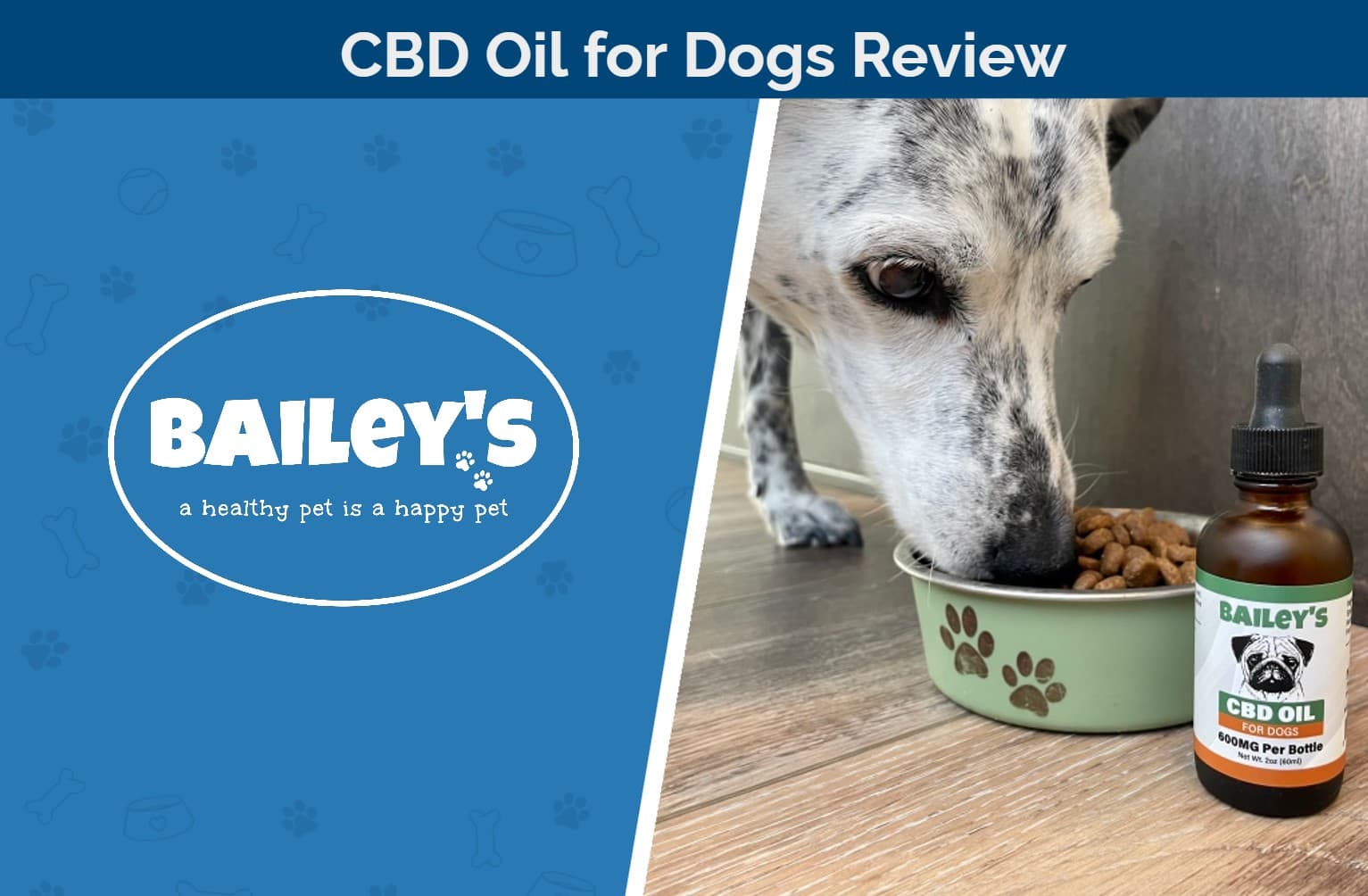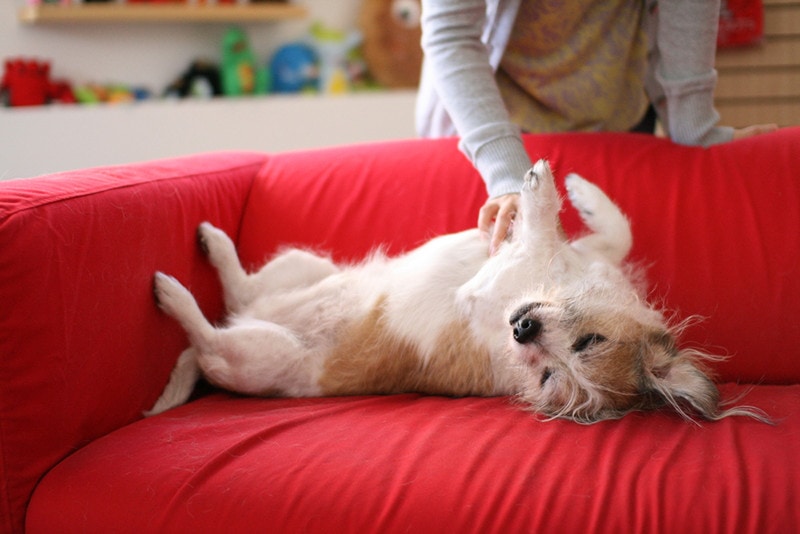Are Dobermans Good with Cats? Facts & Introduction Tips
Updated on

Bred to serve as the perfect guard dog, Dobermans have a reputation for being protective and intimidating. Looks can be deceiving, however, and well-trained Dobermans can make quite gentle pets. However, does that mean that Dobermans are good with cats?
With proper training and supervision, Dobermans can be good with cats, but it will probably take more effort with this breed than some others. In this article, we’ll discuss how to help Dobermans and cats live in harmony—including tips for successful introductions.
Dobermans & Cats: What Are the Concerns?
As we mentioned in the introduction, Dobermans are one of the breeds commonly stereotyped as aggressive and even dangerous. With these thoughts in mind, it makes sense that one might think twice before pairing a Doberman and a cat in the same household.
Like many so-called “aggressive” breeds, the Doberman’s reputation isn’t entirely deserved. Breeding, training, and socialization all combine to produce a dog that’s loving towards their family, while alert and watchful around strangers.
However, like many breeds, Dobermans do have a prey drive, giving them the instinct to chase smaller animals like cats. In many cases, these instincts can be overcome by proper training and supervision, allowing Dobermans to live happily with cats.
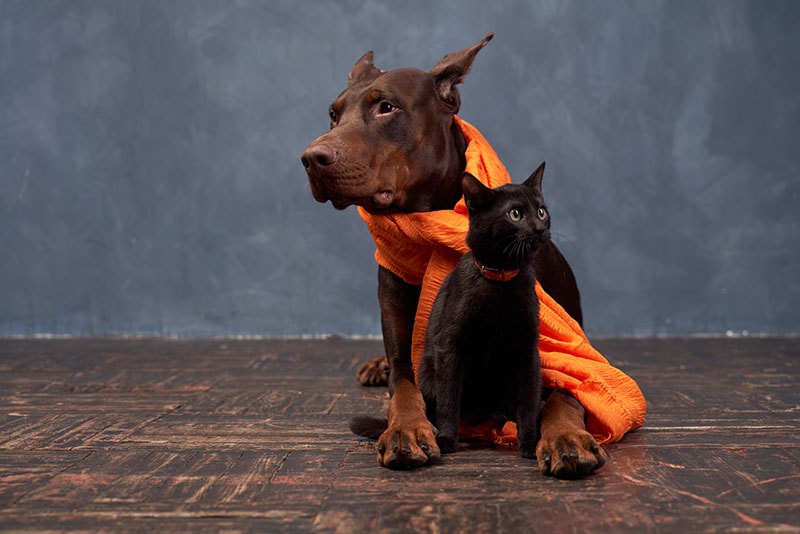
Playing Matchmaker: Pairing the Right Cat & Doberman
One key factor that will ensure the success of a Doberman and a cat living together is pairing the right animals together from the start. Part of this decision will depend on whether the cat or Doberman will be new to the house.
If you already have a cat and are adding a Doberman, puppies are the easiest to train and socialize to accept the kitty. Unless an adult Doberman was raised with a cat, it’s hard to know how they’ll react to one. Not to say that you can’t teach a newly adopted adult dog to accept a kitty, but it will probably be harder.
If you’re bringing a cat into a house where a Doberman is already in residence, the personality of the kitty is essential to success. The Doberman’s prey drive makes it hard to resist chasing after fast-moving smaller animals. Choosing a calm, adult cat—preferably one who’s already familiar with dogs—offers the best chance of success.
Cats who know how to avoid acting like prey are the most likely to live successfully with any type of dog, including a Doberman. For instance, speedy, energetic kittens may be hard for the dog to resist, and baby cats are especially more inclined to behave this way.
If you’re getting a puppy and kitten at the same time, you have a better chance of getting the animals to accept each other quickly—although you’ll still need to supervise them as they learn how to play together correctly.
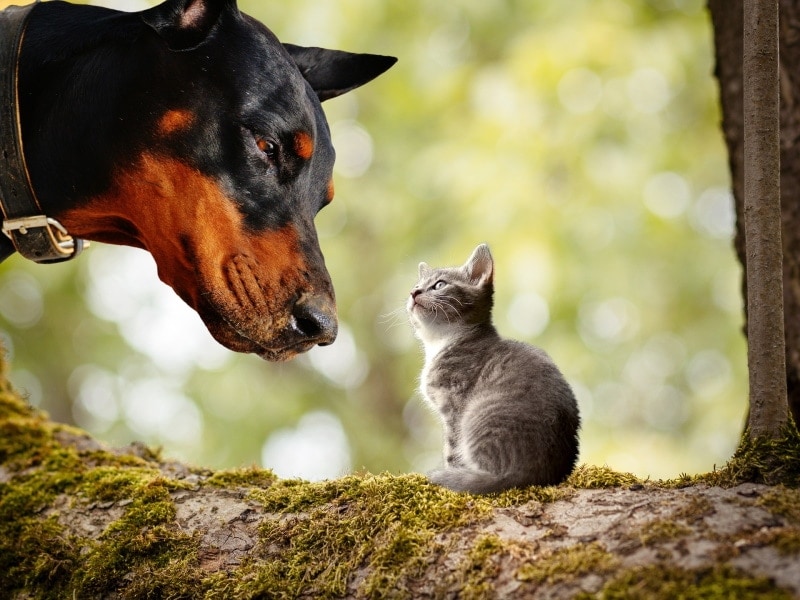
The 5 Tips for Introducing Dobermans and Cats
When it’s time to introduce your cat and Doberman, here are some tips for helping make the meeting successful.
1. Start by Introducing Scents
Begin the introduction process by letting the cat and the Doberman get used to each other’s scent, sight unseen. For example, feed the two animals on either side of a closed door. This method allows them to grow accustomed to each other’s smell and also helps to keep the experience positive by including a tasty meal.
2. Look, but Don’t Touch
Once the pets seem happy to eat while smelling each other, move to the next step by allowing them to see each other, but not interact. One option is to place a baby gate in a doorway with one animal on each side. You could also place each animal in a crate or carrier, and let them watch each other. Stay relaxed and keep the vibe positive by offering treats to each animal.
3. Supervised, Restrained Introductions
Once the Doberman and cat seem relaxed in each other’s confined company, move on to face-to-face introductions. Keep the dog on a leash so you can quickly get them under control if they try to chase the cat. Have both pets in the same room, and continue to offer treats. You’ll probably need an assistant for this step. One person can keep the dog under control, while the other feeds the cat treats. Make sure the cat always feels like they have an escape route, either out of the room or up to higher ground.
4. Supervised Play
Once the cat and Doberman are comfortable with each other, you can move on to allowing them both freedom to interact, while still under your supervision. Again, make sure both animals feel that they can escape from the other if necessary. Continue offering positive reinforcement in the form of treats.
If, at any point, either animal seems uncomfortable or shows aggression, go back to the previous step and spend more time letting them get to know each other. There’s no set timeline for these introductions, as they will be very dependent on the personalities of the pets involved.
5. Unsupervised Play (Optional)
Depending on your comfort level, you may reach a point where you feel safe letting the cat and Doberman have free range of the house, whether you’re home or not. Some pet owners may prefer to play it safe and confine the cat and dog separately whenever no one is around. Again, this is very much an individual choice and depends on how well you feel the cat and Doberman are getting along.
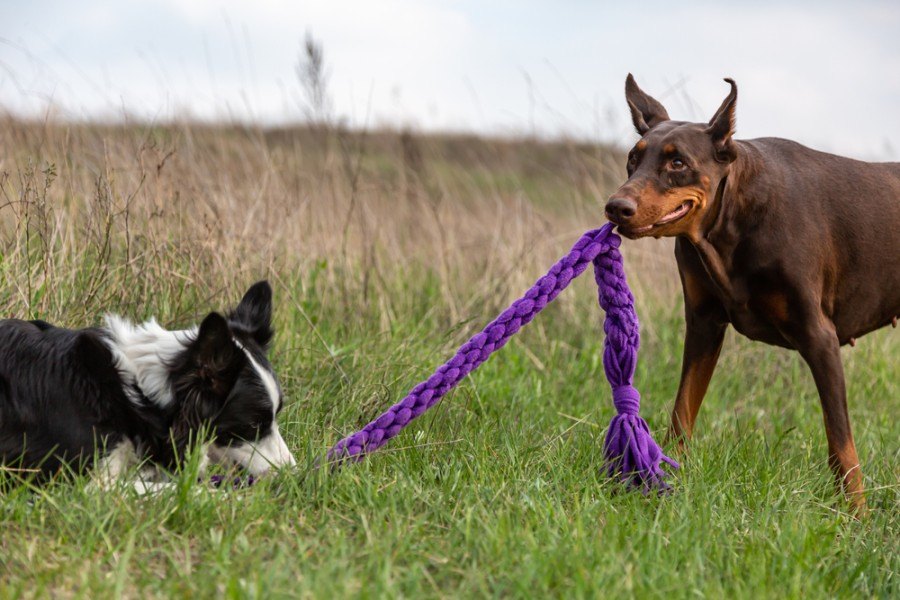
Conclusion
Not every Doberman has the same prey drive intensity. Some may never have an interest in chasing cats, while others may never be trustworthy around small prey animals. The strategies and tips in this article offer an excellent chance at producing a Doberman who is good with cats, as well as a cat who knows how to handle a Doberman. Despite the saying, “fighting like cats and dogs,” these two species are perfectly capable of co-existing happily, especially with proactive and persistent owners.
Featured Image Credit: elis aksenova, Shutterstock

